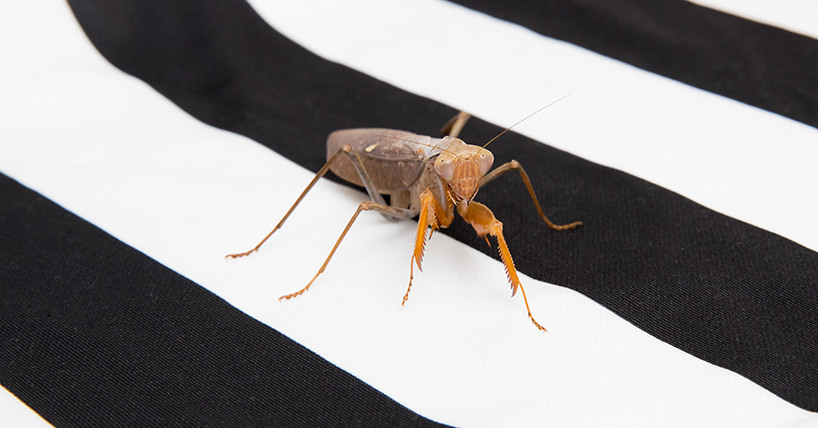mantids technical piece
Why stripes hide moving prey
Published on: 12 September 2019
Publishing in Current Biology, our scientists have shown that patterns – particularly stripes which are easy to spot when an animal is still - can also help conceal speeding prey.
Evolutionary biologists have long been fascinated by camouflage patterns that help animals reduce their chances of being identified and attacked by predators. However, patterns that hide prey when they remain stationary are rendered ineffective once prey are moving: movement itself is conspicuous and breaks camouflage. Whilst some patterns may make moving prey harder to catch through altering judgments of speed and direction, there is no evidence that any pattern can help moving prey avoid initial detection by predators.
In the research, for the first time, the scientists tested the counterintuitive idea of ‘flicker fusion camouflage’: that high contrast patterns with repeated elements, like stripes, which are highly visible when prey are stationary, can conceal prey when moving.
Flicker fusion camouflage is predicted to occur when prey move with sufficient speed that their stripes blur in the eyes of their predators (the ‘flicker fusion effect’), making their appearance more uniform and less conspicuous against the background.
Combining psychophysics and behavioural approaches, the Newcastle team showed that high-contrast stripes elicit the flicker fusion effect in African praying mantids (Sphodromantis lineola), and crucially, that this change in appearance allows prey to become more camouflaged. Therefore, through flicker fusion camouflage, stripes can help moving prey to hide from predators, but only when prey move fast enough that predators can no longer resolve the stripes and the pattern is no longer visible. The ability of a pattern to camouflage prey not only depends upon whether an animal moves or not, but also upon the speed of that movement.
Return to main story




